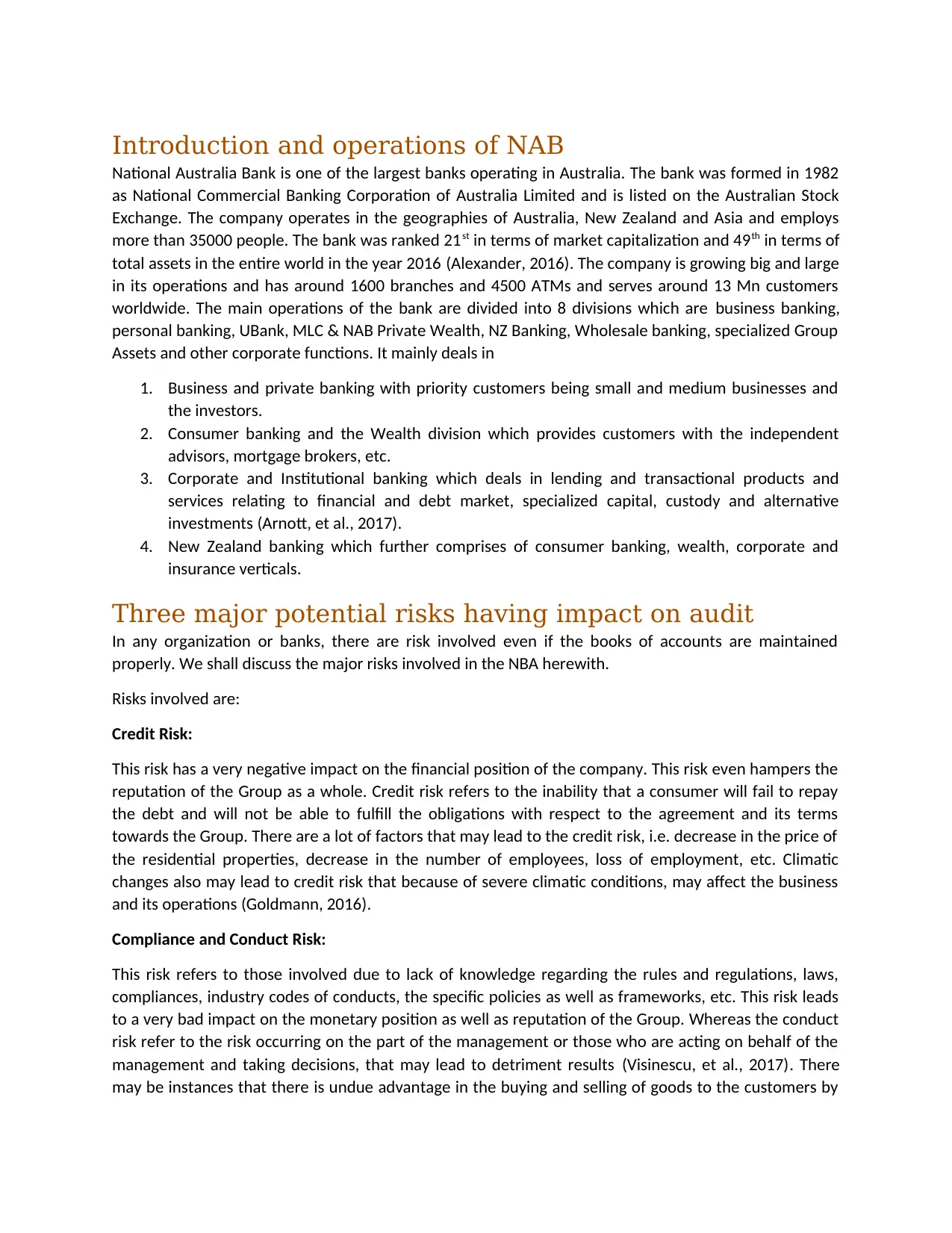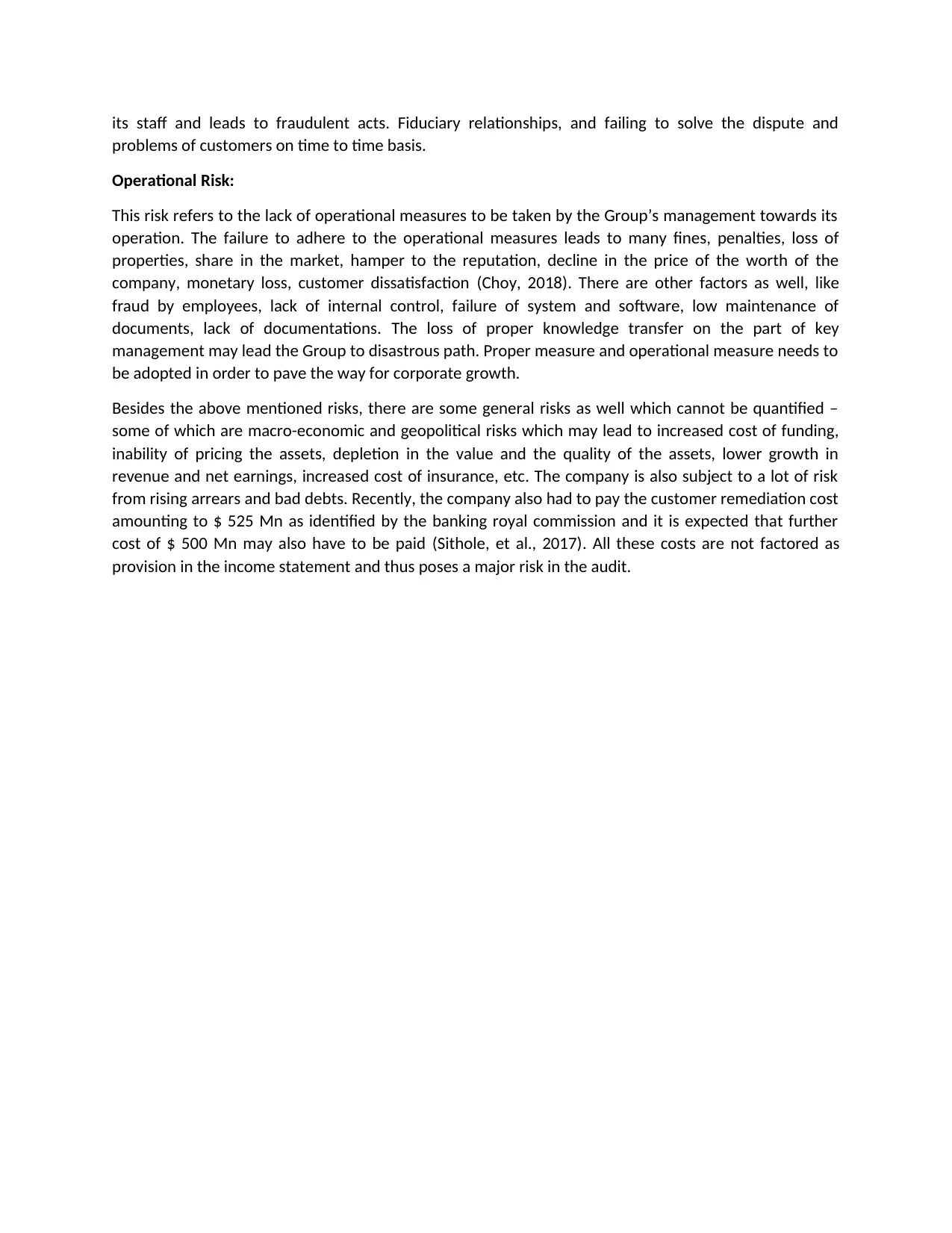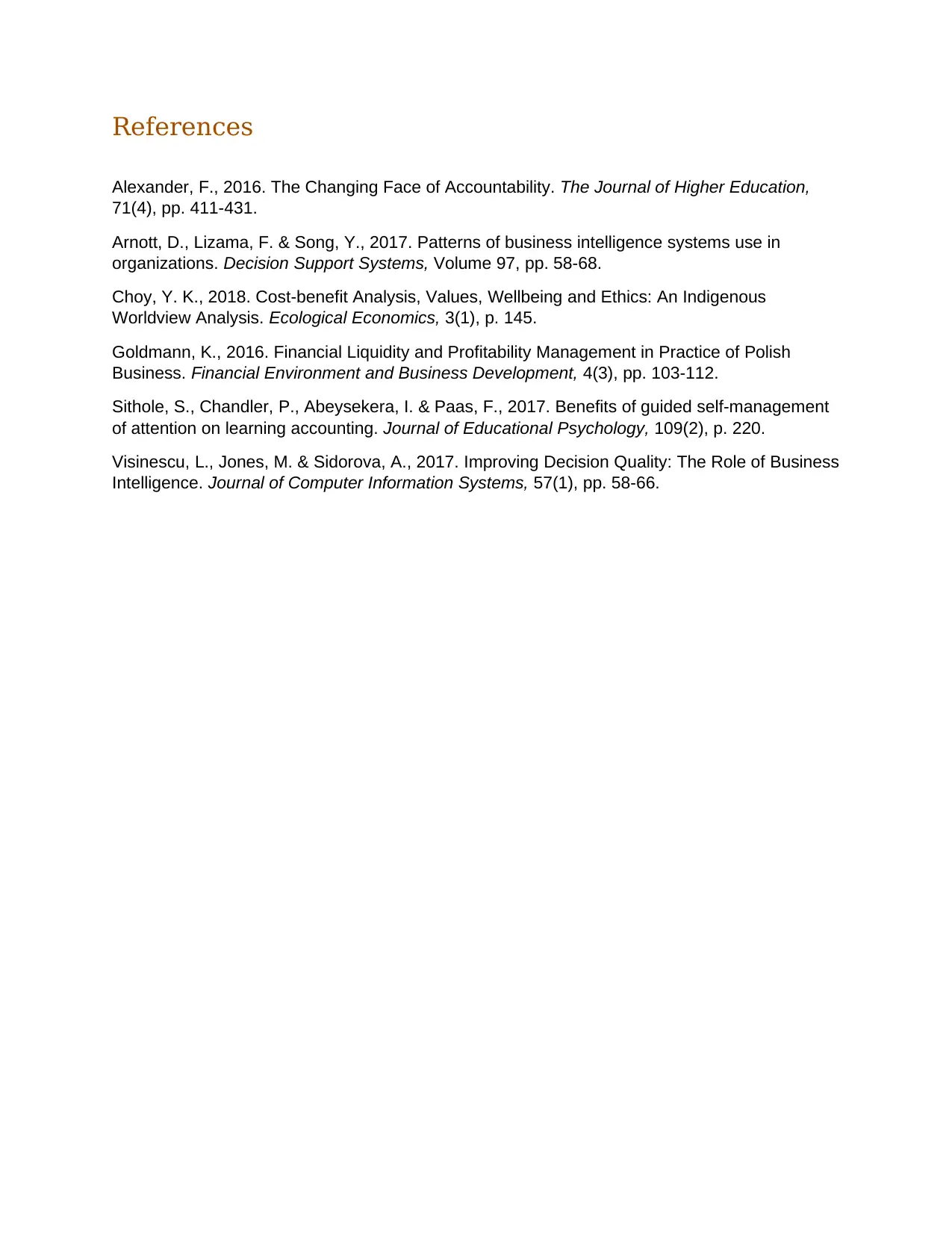Semester 1 2019: ACC3AUD NAB Bank Audit and Risk Analysis
VerifiedAdded on 2023/01/12
|3
|1100
|33
Report
AI Summary
This report provides a comprehensive analysis of National Australia Bank (NAB), focusing on its operations, potential risks, and audit considerations. The report begins with an introduction to NAB, its market position, geographical presence, and key operational divisions, including business banking, consumer banking, and corporate banking. It then delves into the major risks impacting NAB, namely credit risk, compliance and conduct risk, and operational risk, elaborating on the factors contributing to each. Credit risk is discussed in terms of the potential for customer default, while compliance and conduct risk focuses on adherence to regulations and ethical behavior. Operational risk examines the impact of internal failures and system deficiencies. The report also acknowledges broader macroeconomic and geopolitical risks, as well as the impact of customer remediation costs. The report is based on NAB’s 2018 annual report and other business media, and the report is based on an assignment for the Auditing and Assurance course (ACC3AUD) at La Trobe University.
1 out of 3










![[object Object]](/_next/static/media/star-bottom.7253800d.svg)